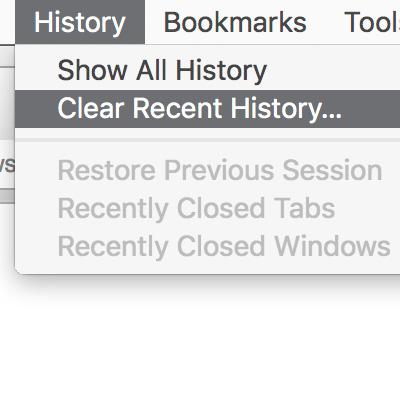
- WHERE IS MY FIREFOX BROWSER HISTORY UPDATE
- WHERE IS MY FIREFOX BROWSER HISTORY DOWNLOAD
- WHERE IS MY FIREFOX BROWSER HISTORY WINDOWS
Starting with Firefox 24, Firefox users can access the same menu on the about:support page as well that they can open directly in Firefox's address bar or by clicking on the Firefox button and selecting Help > Troubleshooting Information.

WHERE IS MY FIREFOX BROWSER HISTORY UPDATE
What may be interesting is that Mozilla has decided to improve the visibility of the update history menu. Step 2: Click the Help menu and then click Troubleshooting Information option. Press Alt key on the keyboard to see Firefox menus. If the profile folder is not present in its default location, you can use this method to know its current location. If your Firefox is on automatic private browsing, it doesn’t record any history. Access Firefox profile via Firefox browser. While that may be useful at times, for instance if updates failed and cannot be installed on the system, it does not provide you with any information about individual updates that have been made. To ensure the history gets removed, re-launch the browser and quit as you regularly do. A Firefox Nightly user for instance is taken to the Nightly page on Mozilla from where the latest version can be downloaded for all supported operating systems. The details link unfortunately is not helpful at all as it is only loading the main page of the browser version that you are using currently. Each update is displayed with its browser version and build string, type, when it was installed on the system, and whether its installation was successful. Standouts include Window Washer and Internet Sweeper.Here you find a list of the most recent updates. Pop over to and search for “browser cache” to see what I mean. There are also many tools available to manage and clean your browser cache. Switch to Advanced > Update here and click on Show Update History.

This will take you to a page that allows you to view a summary of your browser cache and also will allow you to browse the files stored in the cache. When using Firefox view cache by going to the the Address Bar, and type about:cache. It should be somewhere in the Documents and Settings folder on XP. Firefox has a nice way to view files that are in both your memory and file cache.
WHERE IS MY FIREFOX BROWSER HISTORY WINDOWS
This is true at least for Windows Vista and 7, for Windows XP its not. Chrome browser history and session file is stored in AppDataLocalGoogleChromeUser DataDefault. To display the most recent browser updates do the following: Click on the Firefox button and then on Options. Firefox browser history and session file is stored in AppDataRoamingMozillaFirefoxProfiles. To drop the cache, the best method is to go to click Tools: Options menu item and the Cache item in the Privacy section of the Options dialog. It is however well hidden just like the add-on update history is well hidden in Firefox as well. It allows you to read the browsing history of all supported browsers in a neat interface which you can then sort according to your needs and export to various file formats. You click the “List Cache Entries” link, which will show individual entries and the http address which they are caching. The excellent BrowsingHistoryView is a very small utility that supports most modern browsers including Chrome, Opera, Firefox, Internet Explorer, Edge, and Safari. Under the heading “Disk Cache Device”, the “Cache Directory” shows where the cache is located, although just looking at that directory doesn’t show anything other than indecipherable filenames. With Windows Explorer open, click Tools –> Folder Options–> the View tab –> Show Hidden Files and Foldersīy contrast, viewing the Firefox cache is quite easy: Just type “about:cache” into the address bar (without quotes).
WHERE IS MY FIREFOX BROWSER HISTORY DOWNLOAD
Warning: The Local Settings folder is a hidden folder, you will need to make it visible before you can actually see what’s in it. Browsers also track your download history, which is just a list of files you’ve downloaded.

The folder is C:\Documents and Settings\(username)\Local Settings\Temporary Internet Files. In Microsoft Internet Explorer, the images are stored under a hidden folder under each users profile.


 0 kommentar(er)
0 kommentar(er)
